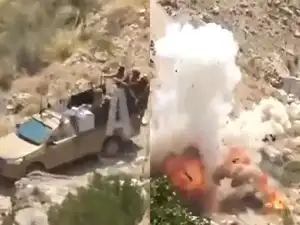Understanding Balochistan: Unrest, Resistance, and Regional Tensions
Balochistan, the largest province of Pakistan by area, has long been a region marked by tension and struggle. Its vast landscape is rich in natural resources, yet the local population often faces economic challenges, political disputes, and security concerns. In recent months, a surge in violent incidents has brought Balochistan back into the international spotlight.

The Roots of Unrest in Balochistan
For decades, Balochistan has experienced waves of unrest driven by longstanding grievances. Local communities frequently voice concerns about the fair distribution of resources and representation. These feelings have fostered resistance movements, some of which have turned to armed conflict. The province's strategic location and economic potential further complicate the local landscape, attracting national and international interest.
Recent Attacks and Escalation
Violence in Balochistan has escalated in early 2025. One major incident involved the Balochistan Liberation Army (BLA), which claimed responsibility for a deadly attack in the Kachhi district. According to a report by The Economic Times, an IED explosion targeted a military convoy, resulting in the loss of fourteen Pakistani soldiers, including a Special Operations Commander. The Pakistan Army responded with a large-scale operation to secure the area and eliminate remaining militants.
This incident is not isolated. Just days prior, Pakistani forces reportedly conducted lethal operations against militant groups in Balochistan, reflecting the ongoing cycle of violence. The timing of the attack has raised regional concerns, especially as it closely followed reported Indian strikes on militant infrastructure across the border.
Baloch Liberation Army and Its Role
The Baloch Liberation Army remains at the forefront of the armed resistance. The group has carried out a series of deadly attacks over the years. In addition to the recent IED attack, the BLA was behind the hijacking of the Jaffar Express train earlier this year, resulting in tragic civilian and military casualties. The group's actions consistently draw international attention, as seen in Hindustan Times' coverage of a video released by the group, documenting the intensity of the conflict on the ground.
Regional and Diplomatic Implications
The ongoing violence in Balochistan has significant diplomatic consequences for the region. The recent attacks have led to increased tension between Pakistan and India. In the aftermath of a Balochistan bombing, Pakistan's leadership openly blamed India for instigating unrest, as reported in Al Jazeera's detailed analysis. These accusations, whether substantiated or not, add a new layer of complexity to already fragile Indo-Pakistani relations.
Despite the persistent challenges, Balochistan continues to be a region of resilience. Its people strive for greater recognition, equitable development, and lasting peace. As the world watches, the situation in Balochistan will shape not only Pakistan's future but also the security landscape of South Asia.
Conclusion
Ongoing unrest in Balochistan highlights deep-rooted issues involving governance, resources, and ethnic identity. Recent attacks and responses underscore the urgency of finding peaceful, sustainable solutions. Continued dialogue, regional cooperation, and investment in development are essential for the province’s future stability.